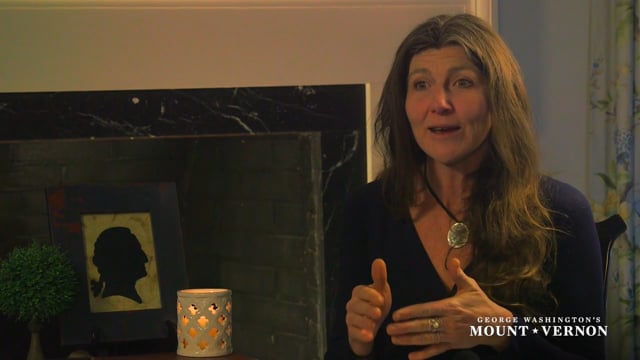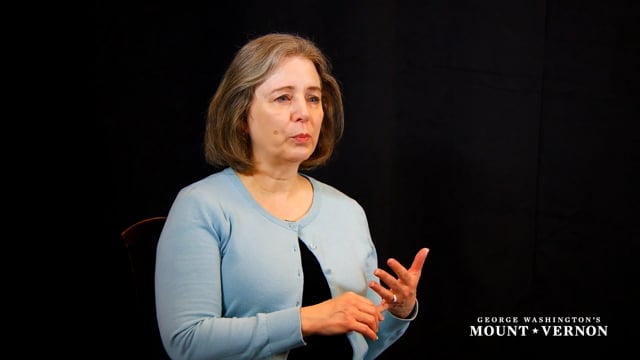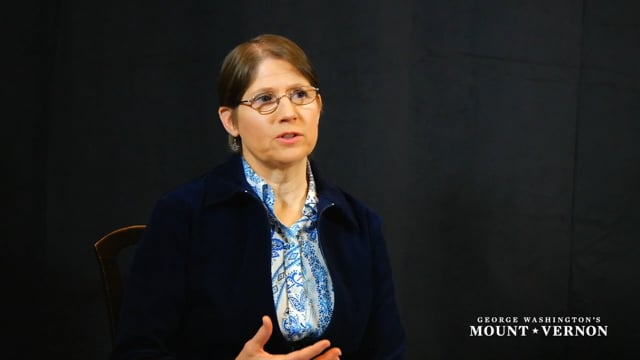If he hadn't excelled at dance, George Washington might have been known merely as an accomplished dodger of musket balls. Like everything, though, he took his performance on the dance floor seriously, once referring warmly to dance as "the gentler conflict."
By Philip G. Smucker
Virginians of all ages brought their competitive spirits to the ballroom, and in scenes that would have amused the modem creators of "Dancing with the Stars," attendees and participants delighted themselves with the fine dancing as much as with the fun of watching others slip up, or otherwise entirely embarrass themselves on the floor.

As did their English cousins, Virginians preferred the playful steps of a French minuet set to Handel over - say - a battle in the woods with the natives. Many would have chuckled knowingly at Shakespeare's lines in King Henry VI, when Burgundy says, "I see our wars will tum unto peaceful comic sport when ladies crave to be encountered with." Most gentlemen of George Washington's era, while aspiring to glory on the battlefield, still preferred love over war - or at least a chance to dance with a lovely lady.
Dancing Teen

By the age of 19, however, it appears that George was dancing regularly, notably on a trip to Barbados with his half-brother, Lawrence, who wrote to his father-in-law Colonel William Fairfax from the islands that "we have no kind of bodily diversions but dancing."
Washington's Journey to Barbados
Dexterity on the dance floor maintained social status, and also allowed for proper courtship. Dance represented an elaborate world of non-verbal signs, a system of gestures, starting with curtsy and bow, which derived from an ancient sometimes forgotten European court life. For George Washington and others, dance was refined flirtation -- a means for Virginia's men to express their adoration and interest in ornately attired women - the loveliest of Southern Belles.
"George Washington would have had most of his early experience dancing at Plantation Homes,"
insists Corky Palmer, a scholar and 18th Century dance instructor at Gadsby's Tavern in Alexandria, Virginia, where George Washington often danced. "In Virginia, dance, unlike in parts of puritanical New England, was both accepted and encouraged. In Virginia the rule was, you danced the first dance with your partner, and returned to the 'one who brung' you, but usually only for the last dance."
In the two main parlors of Belvoir Manor, dances with the Fairfax family would have unfolded on long winter nights with a small ensemble, sometimes consisting of two violins, a French horn, or possibly a harp. As the musicians struck up a chord, couples on the dance floor would stand smiling and facing one another in anticipation of the next dance, often a Scottish reel, an up-tempo number.
During and after the French and Indian War, when there was a ball at the Governor's mansion in Williamsburg, George Washington was often in attendance, sometimes as an honored guest. By the light of many candles and under the gaze of full-length portraits of the British king and queen, men and women in their finest apparel assembled to display their skills.
Mastery of the Minuet
As a young officer, George Washington gained a reputation as a skillful and polished dancer, sometimes taking the floor at the start of a ball to begin the evening with a minuet.
"Mastery of the minuet was important because this dance began every dance event," says Cathy Hellier, an etiquette expert with the Colonial Williamsburg Foundation. "It was an exhibition, stepped one couple at a time, in order of social rank - that is, with the highest-ranking gentleman and lady dancing first, and so on down the line. Everyone else watched and commented, often recording their impressions in their diaries. Whenever minuets are mentioned in letters, diaries, novels, etc., an evaluation of the dancers almost inevitably follows."
If he hadn't excelled at dance, George Washington might have been known merely as an accomplished dodger of musket balls. Like everything, though, he took his performance on the dance floor serious, once referring warmly to dance as "the gentler conflict."
What Was Dancing Like in the 18th Century?
Learn from interpreters and historians from George Washington's Mount Vernon and the Colonial Williamsburg Foundation.
In 1760, only a year into his marriage, George Washington stumbled into a ball that wasn't quite up to the standards he had seen elsewhere. He recounted:
Went to a ball at Alexandria, where Musick and dancing was the chief Entertainment, however in a convenient room detached for the purpose abounded great plenty of bread and butter, some biscuits, with tea and coffee, which the drinkers of could not distinguish from hot water sweet'ned ...
Washington added that, " ... pocket handkerchiefs served the purposes of Table cloths & Napkins and that no apologies were made for either." He gladly dubbed the event the "the Bread & Butter Ball," assuring that it would be celebrated annually in Alexandria into perpetuity.
Dancing Through the American Revolution
General Washington danced through the evening on several occasions during the American Revolution.
Dancing Marathon
Partnered with Kitty Greene, the wife of General Nathaniel Greene, George Washington danced in a marathon session on March 19, 1779. General Greene wrote from Middlebrook, New Jersey that, "His Excellency and Mrs. Greene danced upwards of three hours without once sitting down."
Homecoming in Fredericksburg
After the victory over British forces at Yorktown, General Washington wooed an audience in his old hometown of Fredericksburg, Virginia. His relative recounted that the "minuet was much in vogue at that period, and was peculiarly calculated for the display of the splendid figure of the chief, and his natural grace and elegance of air and manners . . . As the evening advanced, the commander-in-chief yielding to the general gayety of the scene, went down some dozen couples in the contre dance with great spirit and satisfaction."
From other accounts, we know that George Washington was still doing minuets into his 60s.
On his one and only tour of southern states as President, George Washington took special notice of scores of "elegantly dressed" ladies at several evening balls, where he was the guest of honor, both in Charleston and Savannah.
Arriving by boat to Savannah, on his second night in town he met with a "dancing Assembly at which there were about 100 well-dressed handsome ladies." A night later, a local scribe noted that, "After a few minuets were moved, and one country dance led down, the President & his Suit retired about 1 o'clock, (AM)" adding that, "Dances continued to 3 o'clock. (AM)" Such were the late southern nights out, typical of the era.
Some of the most ornate and fanciful balls a President Washington would attend took place in Philadelphia, starting in 1791, often in the upper floor of the City Tavern. The main dining room and dance floor was magnificent and sprawling for the day with showy fireplaces on either end, ornate wooden mirrors on the walls, and an elaborate chandelier overhead.
Founding Hater, Thomas Jefferson
At one particular ball in Philadelphia, Thomas Jefferson expressed disdain for the alleged regal behavior of his old friend George Washington.
Some background on Jefferson's critique is essential because it relates to courtly behavior going back centuries, which is based on strict hierarchy: In England in the 17th century and even before that a king (or prince in smaller regions) and his spouse would preside at formal occasions, particularly at balls. The organizers of the American ball raised a couch several steps for George and Martha Washington to sit on. Dancers were informed of a protocol, which required them to approach the President and First Lady before every dance.
This they did, and they added a bow at the feet of the President and his wife, which provided the appearance of a cow-tow to their overbearing power, as far as Jefferson saw it. In his view, it wasn't the image that a leader, attempting to embody the "will of the people," should project.
For George Washington, however, such occasional displays of pomp came naturally. Despite Jefferson's conspiratorial view that the new nation might soon slip into authoritarian rule, President Washington never harbored royal aspirations, even in private. For his admired public, his chivalry, sportsmanship and good manners were something to hail and admire. For them, the hero of the Revolution was beyond reproach.








